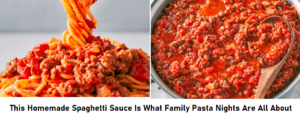Snack Swaps: Trading High-Sugar Options for Blood Sugar-Friendly Alternatives:- Daily meals and healthful snacks can help diabetics maintain stable blood sugar levels. This article suggests 10 snacks to assist diabetics maintain normal blood sugar levels. Our snacks contain protein, fibre, healthy fats, and ingredients that may stabilise blood glucose overnight.
Snack Swaps: Trading High-Sugar Options for Blood Sugar-Friendly Alternatives
High-protein snacks
Protein-rich foods include:
- Roasted chickpeas and beans
- Edamame, tempeh, and tofu
- Soy nuts
- turkey slices
- Smoked salmon slices
- Protein is essential for tissue growth and repair. It makes a person feel full and reduces overeating.
- A 2016 study found that type 2 diabetics may benefit from high-protein diets.
- Protein sources vary in advantages and hazards. Animal proteins like red meat may enhance type 2 diabetes risk. However, some plant-based proteins may lower this risk.
- Adult women should consume 46 g of Trusted Source of protein daily, and men 56 g.
- Protein demands depend on height, weight, exercise level, and health. Protein should make up 10–35% of daily calories.
High-fiber snacks
Diabetes patients may enjoy these high-fiber snacks:
- Kale smoothies and sprouted full grain breads.
- chickpea, bean, or whole grain pastas
- Oatmeal, spinach, and other vegetable chips
- carrots dipped in hummus sweet potato trail mix
- Fibre is vital to the diet. A 2018 review reveals consuming whole grains and wheat fibres may reduce type 2 diabetes risk by 20–30%.
- High-fiber carbohydrates breakdown slower. Diabetes sufferers benefit from slower digestion, which minimises blood sugar spikes. Fibre gives a person nutritional heft, making them feel fuller.
- Females 19–30 should consume 28 gm of fibre daily, and males 34 g. Fibre needs decrease after 30.
Also Read:-The 9 Best High-Fiber Snacks for People with Diabetes
:max_bytes(150000):strip_icc()/Can-You-Eat-Dried-Fruit-If-You-Have-Diabetes-cfc60ec43da84d9aa76b4cfc7462c8d6.jpg)
Snack Swaps: Trading High-Sugar Options for Blood Sugar-Friendly Alternatives
Healthy fat snacks
The following snacks include diabetes-friendly fats.
- oily seafood like mackerel and sardines
- Avocado, olives, almonds, pistachios, or walnuts.
- Chia, flax, or sesame
- Essential nutrient: fat. A 2018 review showed that some fats, especially fatty fish fats, may reduce type 2 diabetes risk.
- The appropriate fat types and quantities are crucial. Obesity and fat increase type 2 diabetes risk.
- Adults should consume 20–35% of their calories from fat, with less than 10% from saturated fat. As with all nutritional guidelines, this varies by person.
Low-sodium snacks
Diabetes patients may enjoy these low-sodium snacks:
- Almond or peanut butter-topped apples
- Celery, quinoa, air-popped popcorn
- A low-sodium diet may improve diabetes-related blood pressure and cardiovascular risk.
Nighttime nibbles
A person could try this before bed:
- Low-sodium cottage cheese, hard-boiled eggs, sugar-free Greek yoghurt, and casein-based protein supplements.
- Early morning blood sugar levels may be high for diabetics. For some, a small, high-protein snack may stabilise their levels overnight.
Foods to avoid
Diabetics should avoid fast-raising blood sugar foods. This includes:
- Sugary foods like cookies, cupcakes, and candy can boost blood sugar and trigger weight gain.
- Sodas, sweetened fruit juices, energy drinks and various alcohol mixers can raise blood sugar.
- Energy bars: Dried fruit-flavored energy bars may say “healthy” but include sugar.
- Generally, checking label sugar amount helps.
Tips for healthy snacking
These tips can help diabetics snack healthily:
- Instead of soda, drink water.
- Drinking water throughout the day can satisfy hunger.
- Sodas, sweetened juices, and other sugary drinks should be limited. Moderate coffee and tea are fine, but cream, sugar and other flavourings add calories and raise blood sugar.
- Diabetes patients may benefit from drinking water instead of diet drinks containing artificial sweeteners. Despite the FDA’s approval of several of these sweeteners, large-scale studies have found no health advantages, according to a 2016 literature review.
If you like this article about Snack Swaps: Trading High-Sugar Options for Blood Sugar-Friendly Alternatives please share this article with your friends and family members.



